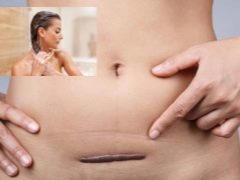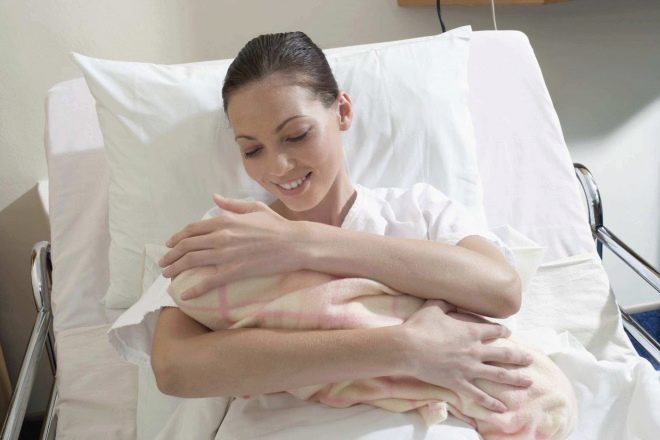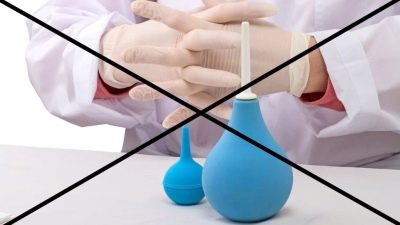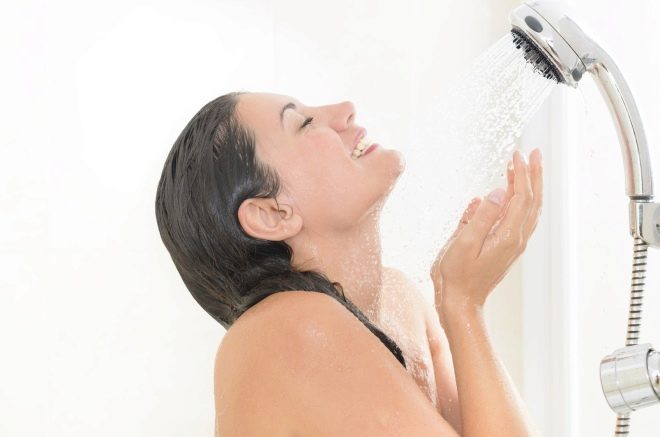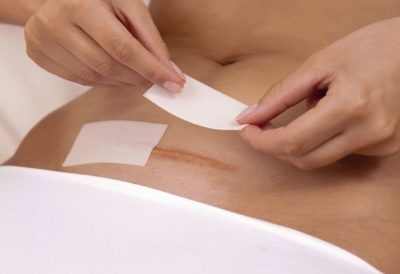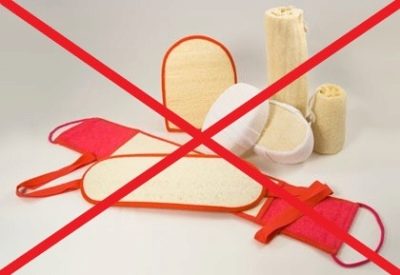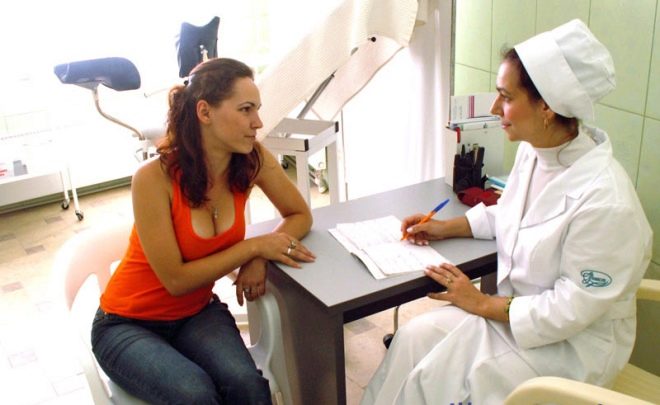How many days after a c-section can you take a bath or shower?
The recovery and rehabilitation period after a cesarean section requires a special approach. Significant restrictions are imposed on the woman’s physical activity regimes, on sex life, on planning for the next pregnancy. Special attention needs nutrition and care for seams. There are restrictions on hygienic procedures, in particular, water. In this article we will tell you how and when a woman can take a bath, swim in the sea or a river.
Hygiene issues
Most women in childbirth after cesarean when discharged from the maternity hospital are so happy from the consciousness of a quick return to their family that they simply forget to ask the attending physician about the organization of hygiene after surgical delivery. These questions are usually in full growth before her, after discharge.
Hygiene is a very important task in the postpartum period. Properly organized hygiene measures will help to avoid infection of postoperative wounds, will contribute to a more rapid recovery of the body after severe stress, which, of course, is a cesarean section.
But the wrong approach to hygiene is fraught with the development of complications in the puerperal, and therefore the question of water procedures, as a constant component of the hygiene of a modern woman, is quite acute.
Care of postoperative suture before and for some time after removal of suture material implies its treatment with green paint from possible bacterial infection, as well as moderate drying with hydrogen peroxide and regular dressing changes.
That is why the suture is not recommended to wet until its complete healing.
Full tightening of the outer scar on the skin usually ends 3 weeks after surgery. If the early postoperative period was accompanied by complications, then a longer healing of the suture, complications in the form of proliferation of connective tissue, the formation of hernias, fistulas, keloid scar, and part of the sutures are quite possible. In this case, the ban on the contact area of the postoperative scar with water is extended individually.
If there are no complications, the suture heals well; for the first three weeks after the operation, a woman should not take a bath, bathe in the shower. The upper part of the body should be wiped with water, the external genitals should be gently washed, trying not to fall into the vagina and the suture area with water.
During this period, douching is also contraindicated. The process of healing internal sutures on the uterus goes even longer than the process of scarring outside, and therefore it is necessary to exclude any possibility of tap water and bacteria or viruses in the genital tract along with it.
Washing of the external genital organs a woman should be carried out two or three times a day, sanitary pads should be changed every 3 hours. It is important that in the process of separation of postpartum discharge (lohii) to maintain cleanliness and hygiene.
When can I shower in the shower?
It is recommended to bathe in the shower after cesarean section no sooner than the external suture heals. According to experts, with an uncomplicated rehabilitation period, this takes about three weeks. Taking a shower immediately after removing the stitches is not the best solution. After the suture, which tightens the edges of the wound, is removed, it takes about two more weeks for the external scar to be considered complete.
Thus, it is recommended to take a shower not earlier than 5–6 weeks after surgery. Water should be warm (not hot and not cold), a douche that is useful for improving muscle tone and physical fitness after childbirth, it is advisable to practice not earlier than 3-4 months after surgery.
When taking a shower, a woman should avoid directing a stream of tap water to the external genitals, to the area of the postoperative scar. It is considered optimal at first to cover the seam on the skin with a surgical dressing and fix it on top with a special waterproof plaster. After bathing, the bandage is removed.
Do not use a hard washcloth, especially rub her stomach and groin.
It must be remembered that tap water is not as clean as it seems. It is inhabited by masses of microorganisms, not all of which are harmless. And if we take into account that the woman’s immunity is badly undermined after the operation, the consequences of improper organization of water procedures can be rather unfortunate.
Bathing in the bath
Taking a bath after a cesarean section is recommended not earlier than two mandatory conditions are met: the external suture will heal and the postpartum discharge (lochia) will end. These secretions are completely natural and normal - this is how the uterus is cleansed from blood that fell into the cavity during the separation of the placenta. The process of uterus involution is also accompanied by excretions - its reverse development, reduction to the former physiological sizes.
The first days after the operation there is a discharge of blood, bright, then blood clots appear in them, after 5-6 days there is serous fluid in lochia, and after 2 weeks - a yellowish mucus. When the discharge becomes normal, peculiar to a woman before pregnancy, it is a conditional signal that the uterus is clear.
This usually occurs 6–8 weeks after surgery. But there may be a later termination of postpartum discharge. At the end of the discharge they also speak of the primary healing of the inner scar on the uterus. From now on, sex life with barrier contraception (condoms) is permitted, and bathing is also possible at the request of the woman.
It is important for the first time not to lie in the bath for hours, but to confine to a 7-10 minute procedure. Hot water should be avoided so as not to provoke blood flow to the pelvic organs and not to cause bleeding.
Bath, sauna
Bath and sauna are very useful inventions of mankind, promoting health and promoting improvement of blood circulation. But after the operation they are unacceptable precisely because of the high temperatures. A woman can not overheat, because it can cause increased postpartum secretions, bleeding. Washing in the bath is strictly prohibited.
Walking to a bath and sauna without harm to the health of a woman who has recently given birth through a caesarean section is possible only when the internal suture on the uterus is strong enough. Typically, these procedures are permitted simultaneously with the lifting of the ban on abdominal exercises. Six months after the operation, a visit to the bath, the sauna will be safe and will bring a lot of beauty and health benefits to the woman.
Swimming pool
Swimming and aqua aerobics are considered one of the earliest permitted forms of physical activity after a cesarean section. But it should be remembered that in a public pool, where a woman will come, there are even more bacteria and a microorganism than in tap water. In addition, the water in the public pool is strongly chlorinated, which is an additional irritant.
A visit to the pool will be safe and useful only after 3 months have passed since the moment of operational delivery. An important factor is the absence of postoperative complications. Therefore, before you begin to visit the pool, you should always consult with your doctor.
Open water
Swim in the lake, river and the sea, especially if the yard is hot summer, I want. But it should be understood that the probability of infection after surgery when bathing in an open pond is higher than in a public pool. Any open water body is a natural habitat of numerous microorganisms. At the same time, stagnant reservoirs (ponds, lakes) are more dangerous than the sea, in whose salt environment far from all microbes and viruses survive.
Rest on the sea, in fresh and smaller water bodies should be postponed to a later time.
In the first 3-4 months after the operation, such a rest, as well as being on the beach in the open sun, if a cesarean section was performed, are contraindicated.
General rules
Water procedures after cesarean section will require women to follow certain rules.
- Do not use toilet soap with saturated perfume fragrances, it strongly dries the skin, especially in intimate places. Choose either the usual baby soap, or special means for intimate hygiene. Pay attention to the composition. It is desirable that the composition was lactic acid.
- When flushing, the external genitals should be washed in the first place with movements from the pubis to the anus. Then proceed to the washing of the anus. This procedure is important to prevent opportunistic and pathogenic microorganisms from the intestines and feces from getting into the genital tract.
- Sponges, washcloths and other bathing devices should not be used during the water procedures of the genitals.
- While the seams in the abdomen are not removed, it is advisable to wash out after each urination. In order not to disturb the balance of the vaginal microflora, you should not use toilet soap every time, it is enough to wash with soap only twice a day - in the morning and in the evening. It is better to perform the rest of the washing away without any detergents.
- After the ban on the bath, the bath will be removed, it is not necessary to hurry with the use of abrasives for the abdomen - peeling can be applied, but a little later. And also better to refrain from Charcot's soul.
- If you are going to have a beach holiday, and after a caesarean section only 2-3 months have passed, you should definitely visit a doctor, get tested and ask him about the possibility of swimming and relaxing in the pond. If there are no complications, an obstetrician-gynecologist can resolve.
For details on how to care for a suture after a cesarean section, see the following video.
